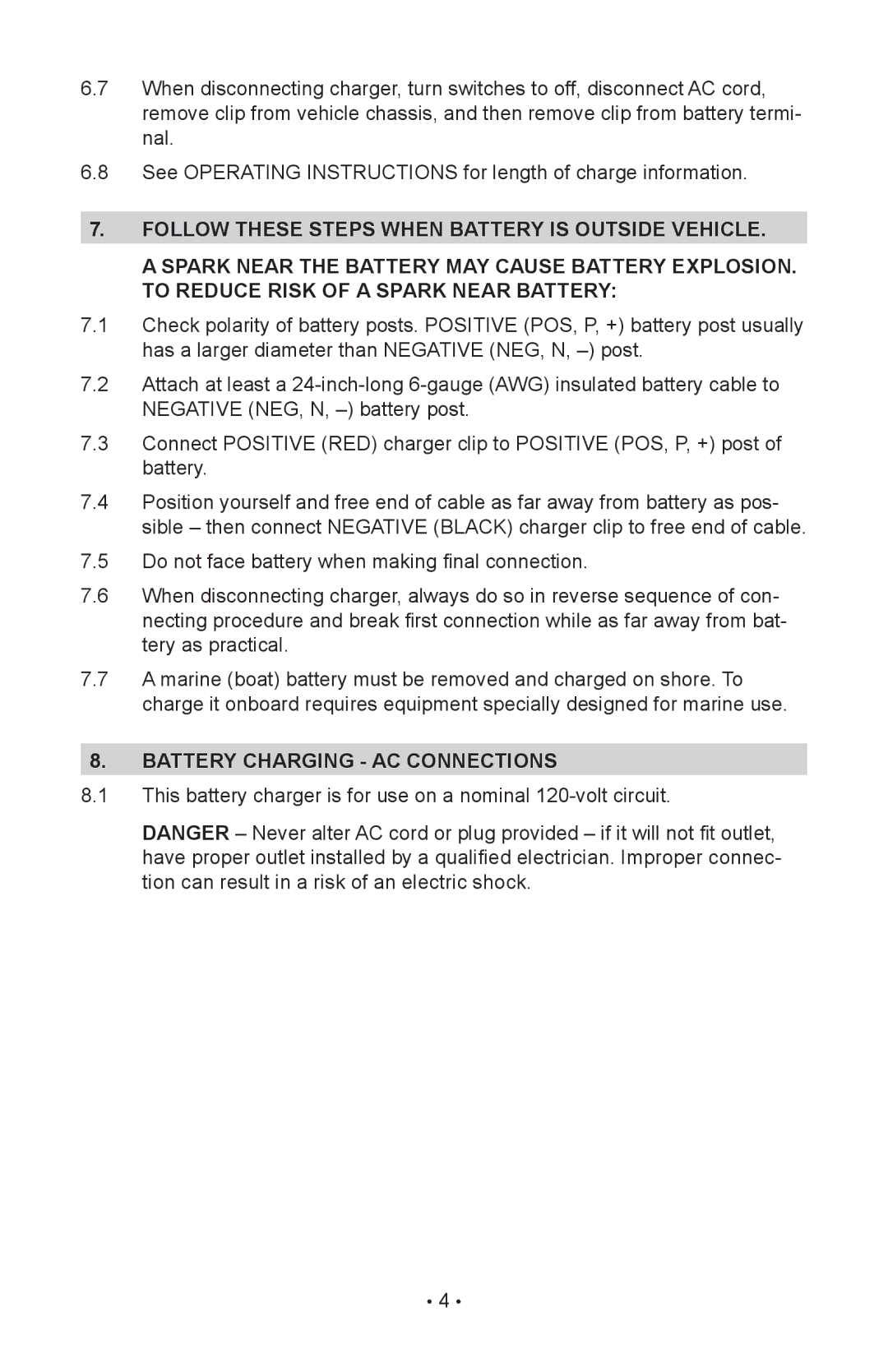
6.7When disconnecting charger, turn switches to off, disconnect AC cord, remove clip from vehicle chassis, and then remove clip from battery termi- nal.
6.8See OPERATING INSTRUCTIONS for length of charge information.
7.FOLLOW THESE STEPS WHEN BATTERY IS OUTSIDE VEHICLE.
A SPARK NEAR THE BATTERY MAY CAUSE BATTERY EXPLOSION. TO REDUCE RISK OF A SPARK NEAR BATTERY:
7.1Check polarity of battery posts. POSITIVE (POS, P, +) battery post usually has a larger diameter than NEGATIVE (NEG, N,
7.2Attach at least a
NEGATIVE (NEG, N,
7.3Connect POSITIVE (RED) charger clip to POSITIVE (POS, P, +) post of battery.
7.4Position yourself and free end of cable as far away from battery as pos- sible – then connect NEGATIVE (BLACK) charger clip to free end of cable.
7.5Do not face battery when making final connection.
7.6When disconnecting charger, always do so in reverse sequence of con- necting procedure and break first connection while as far away from bat- tery as practical.
7.7A marine (boat) battery must be removed and charged on shore. To charge it onboard requires equipment specially designed for marine use.
8.battery charging - ac connections
8.1This battery charger is for use on a nominal
DANGER – Never alter AC cord or plug provided – if it will not fit outlet, have proper outlet installed by a qualified electrician. Improper connec- tion can result in a risk of an electric shock.
• 4 •
